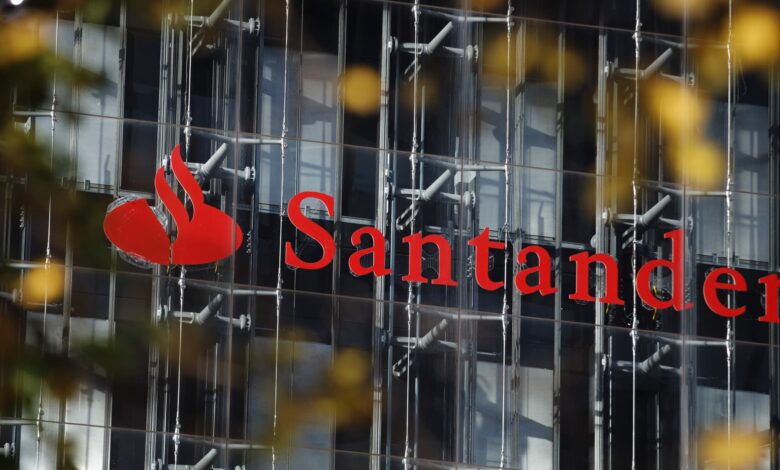UBS loses crown as continental Europe’s most valuable bank to Santander

Banco Santander Surpasses UBS as Europe’s Largest Bank
In a surprising turn of events, Banco Santander has overtaken UBS to become the largest bank in continental Europe by market capitalization. This shift comes as U.S. tariffs continue to impact the banking sector in the region, causing turmoil and uncertainty for major financial institutions.
UBS, a Swiss banking giant, saw its market capitalization drop to 79.5 Swiss francs ($97.23 billion) following the announcement of President Donald Trump’s tariffs. On the other hand, Banco Santander’s market cap rose to 91.3 billion euros ($103.78 billion), reflecting a significant disparity in performance between the two banks.
The divergence in their share prices is evident, with UBS experiencing a 17.2% decline year-to-date, while Banco Santander has seen a substantial 35% increase. The broader European banking sector has also been impacted by the trade policies implemented by the White House, leading to concerns about economic growth and the possibility of a recession.
The imposition of tariffs on imports from the European Union has created challenges for European countries, with Switzerland facing a 31% levy post-pause and potential additional duties on imported drugs. This could have adverse effects on the Swiss pharmaceutical industry, which has been a significant contributor to the country’s exports.
In a positive development, European Union banks received a boost from the ReArm initiative in March, aimed at loosening fiscal rules and promoting increased borrowing for defense spending. This initiative is expected to stimulate economic activity and support the banking sector in the region.
When it comes to their exposure to the U.S. market, Banco Santander and UBS have distinct profiles. Banco Santander, although the fifth-largest auto lender in the U.S., derives only 9% of its profits from the country. In contrast, UBS has a significant presence in the U.S. through its global wealth management division, with half of its invested assets concentrated in the Americas region.
UBS’s outlook is clouded by uncertainty surrounding potential new capital requirements from Swiss authorities, as well as the impact of a strong Swiss franc on its profitability. The appreciating currency, coupled with depressed inflation and potential interest rate cuts by the Swiss National Bank, could further challenge UBS’s financial performance.
In comparison, the European Central Bank is expected to lower its deposit facility rate by a quarter point, signaling a less restrictive monetary policy. However, this move could affect local lenders’ net interest income revenues from loans, adding another layer of complexity to the banking landscape in Europe.
Overall, the dynamic shifts in market capitalization and exposure to global markets highlight the challenges and opportunities facing European banks in the current financial landscape. As they navigate the impact of tariffs, economic uncertainties, and regulatory changes, banks like Banco Santander and UBS will need to adapt and innovate to maintain their competitive edge in the evolving banking industry.





